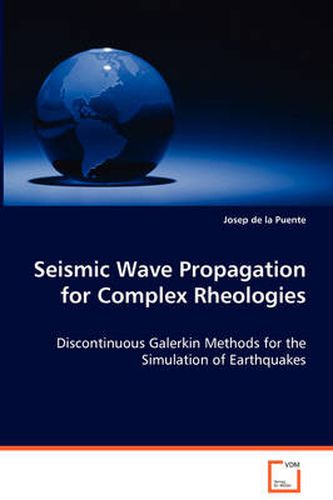Readings Newsletter
Become a Readings Member to make your shopping experience even easier.
Sign in or sign up for free!
You’re not far away from qualifying for FREE standard shipping within Australia
You’ve qualified for FREE standard shipping within Australia
The cart is loading…






This title is printed to order. This book may have been self-published. If so, we cannot guarantee the quality of the content. In the main most books will have gone through the editing process however some may not. We therefore suggest that you be aware of this before ordering this book. If in doubt check either the author or publisher’s details as we are unable to accept any returns unless they are faulty. Please contact us if you have any questions.
Seismic waves are produced whenever a large amount of energy is released under the surface of the Earth, for example when earthquakes occur. Such waves are perturbed by the heterogeneities they find in their travel through the subsurface, from hypocenter to seismometer. In the last decades, the increase in computational power has made it possible to simulate the propagation of seismic waves in fully 3D heterogeneous media. However, the subsoil often displays very complicated geometrical structures which are difficult to nest by nowadays simulation methods. The ADER-DG (Arbitrary high-order DERivatives Discontinuous Galerkin) method provides the means to better represent subsoil geological structures using tetrahedral meshes. Such meshes can be easily deformed and adapted to very complicated geometries such as folded layers, faults and shallow basins. In this book the ADER-DG method is developed for problems of elastodynamics and further extended to accommodate anisotropic, viscoelastic and poroelastic rheologies. For all cases examples are provided to verify the fast convergence properties and to show the precision of the synthetic seismograms computed.
$9.00 standard shipping within Australia
FREE standard shipping within Australia for orders over $100.00
Express & International shipping calculated at checkout
This title is printed to order. This book may have been self-published. If so, we cannot guarantee the quality of the content. In the main most books will have gone through the editing process however some may not. We therefore suggest that you be aware of this before ordering this book. If in doubt check either the author or publisher’s details as we are unable to accept any returns unless they are faulty. Please contact us if you have any questions.
Seismic waves are produced whenever a large amount of energy is released under the surface of the Earth, for example when earthquakes occur. Such waves are perturbed by the heterogeneities they find in their travel through the subsurface, from hypocenter to seismometer. In the last decades, the increase in computational power has made it possible to simulate the propagation of seismic waves in fully 3D heterogeneous media. However, the subsoil often displays very complicated geometrical structures which are difficult to nest by nowadays simulation methods. The ADER-DG (Arbitrary high-order DERivatives Discontinuous Galerkin) method provides the means to better represent subsoil geological structures using tetrahedral meshes. Such meshes can be easily deformed and adapted to very complicated geometries such as folded layers, faults and shallow basins. In this book the ADER-DG method is developed for problems of elastodynamics and further extended to accommodate anisotropic, viscoelastic and poroelastic rheologies. For all cases examples are provided to verify the fast convergence properties and to show the precision of the synthetic seismograms computed.